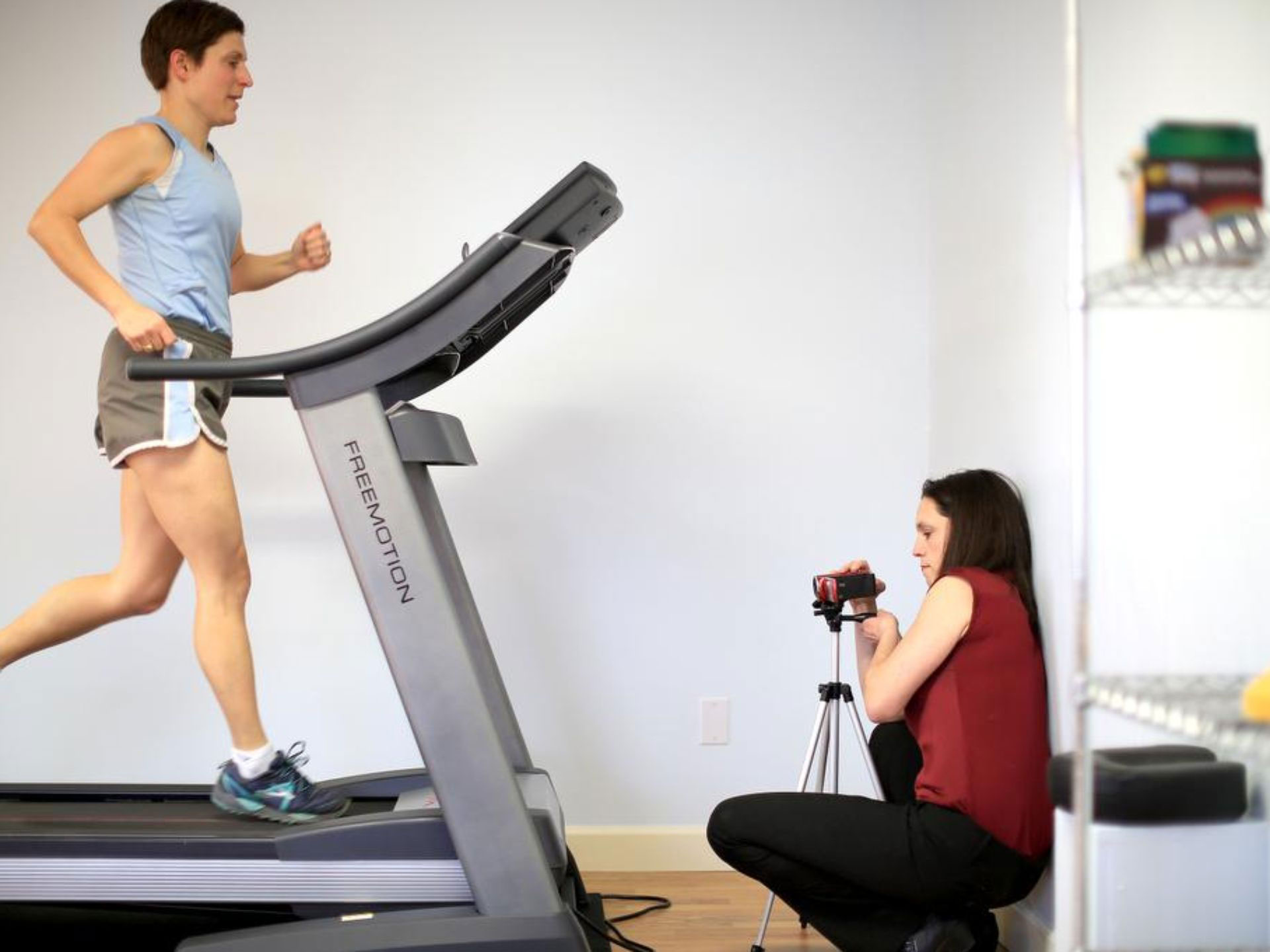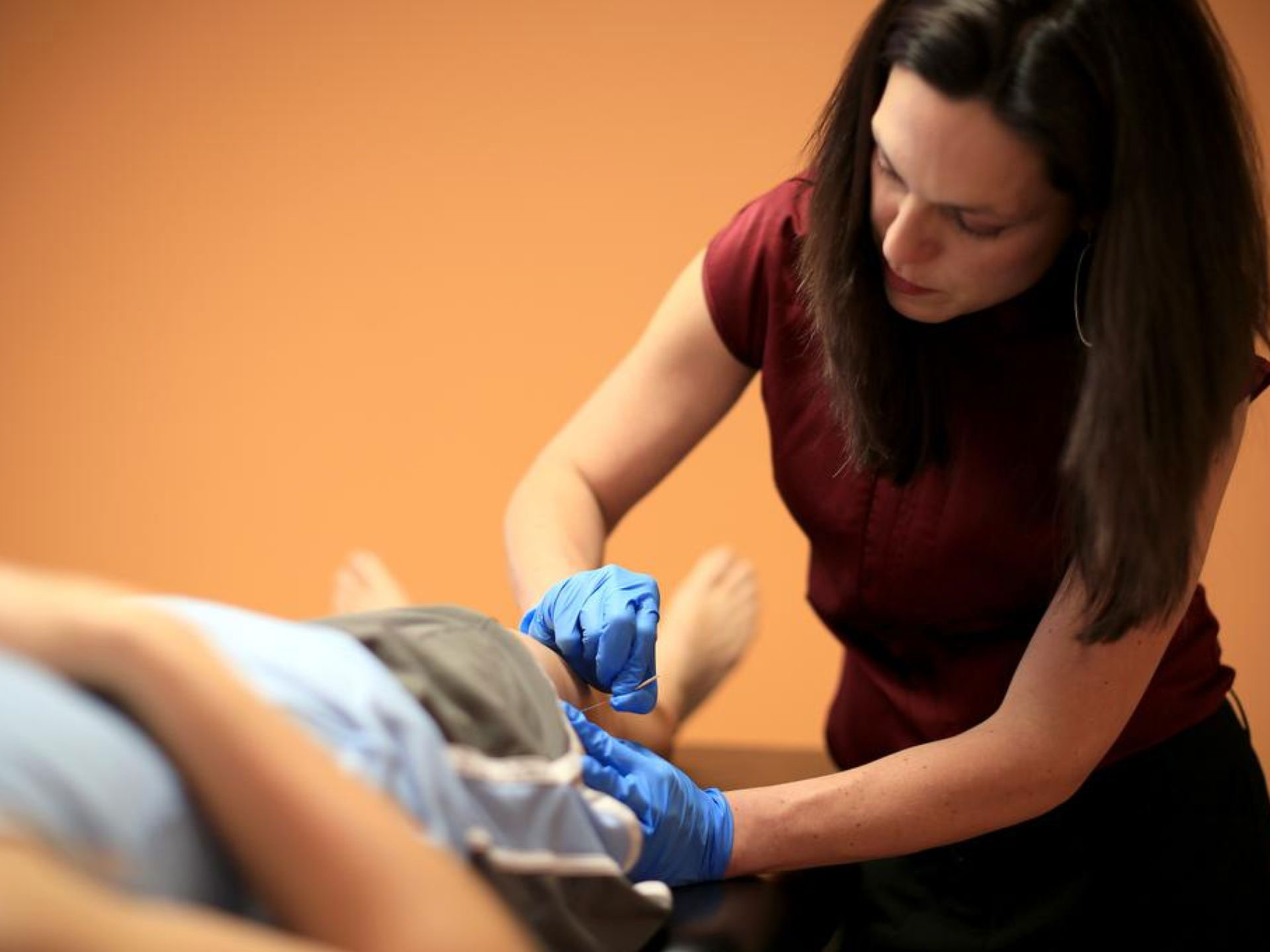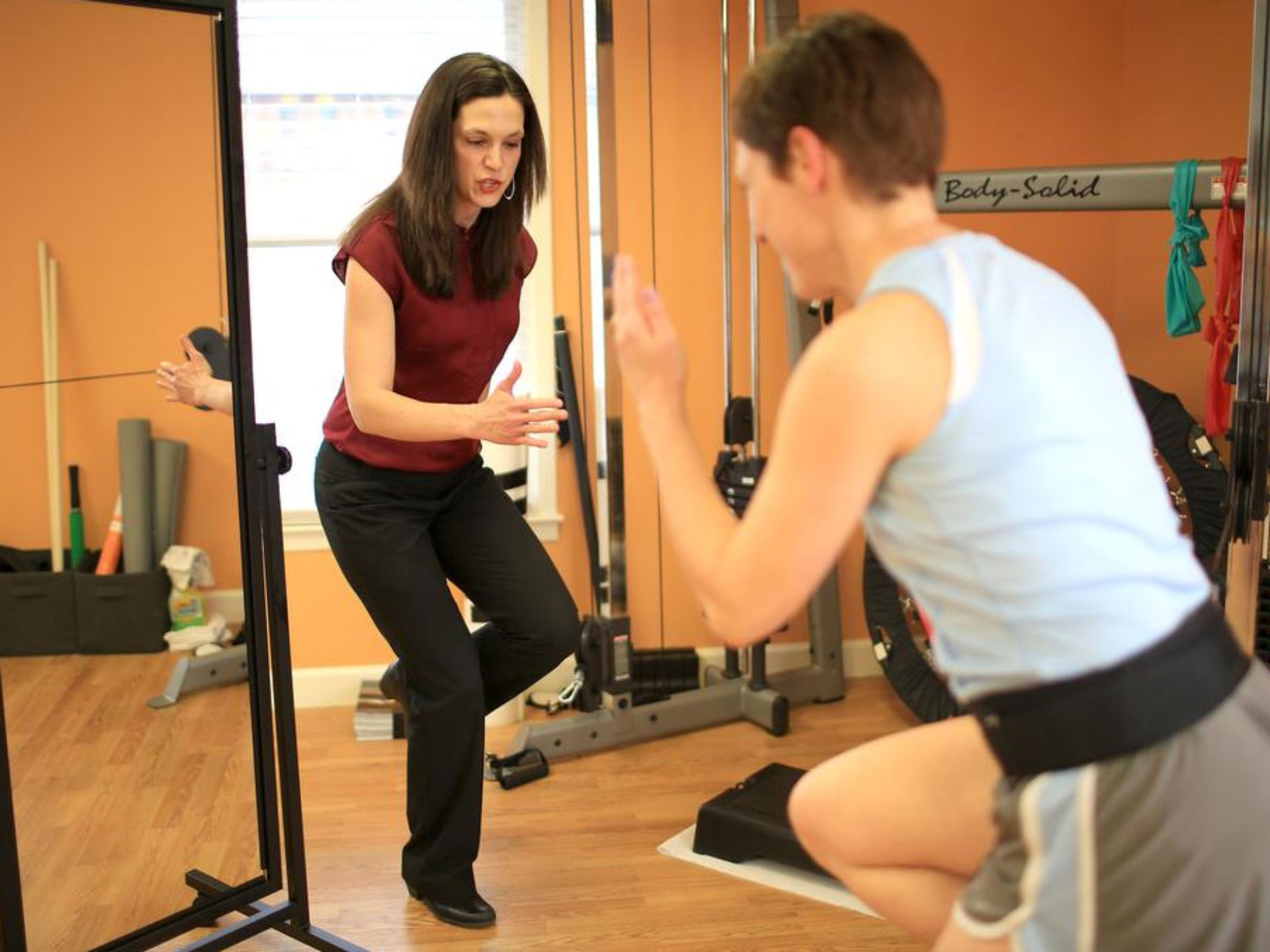Runner’s biomechanical Evaluation
This is a 2-hour biomechanical analysis and treatment session for runners to profile their running form, efficiency, and individual characteristics including strength, flexibility, and alignment. Through this comprehensive analysis, same-day treatment and home program will be provided to targeted areas responsible for pain or decreased performance. This running analysis is meant for runners of all ages and levels. High school athletes, seniors, recreational joggers, and elite-level runners are all very appropriate for this type of evaluation. It is also a very unique experience where a runner can learn more about himself or herself as an athlete, and understand good habits as runners to use throughout their lives. This session allows every runner to understand how to maximize their efficiency with form and workouts to allow success with running goals! Depending on your evaluation, the following services may be provided:
+ Running Gait Video Analysis
Gait analysis is essential in treating runners comprehensively. There is very clear research that strengthening alone is not sufficient for treating injuries in runners. Specific movement patterns during running can cause inefficient form and exert excessive forces through tendons, bone, and muscles. These movement patterns result in increased impact and decreased ability to absorb shock, causing microtrauma with each step. During the biomechanical evaluation, video analysis is performed, reviewed in detail with the client, and these specific aspects of gait are identified. Ways to correct these issues are addressed with gait retraining techniques.
+ Structural Alignment Evaluation
This is a head to toe assessment of standing posture in regards to spinal alignment and how weight is dispersed throughout the different joints of the body. A thorough screen is performed looking at bony joint structure including checking femoral anteversion and retroversion, forefoot and hindfoot alignment, and global joint mobility to accurately assess how forces are distributed in the body during movement. Joints or soft tissues being forced to accept more load than what is appropriate during sustained postures or activity are the leading reasons for most symptoms and pain.
+ Functional Movement Screening
These are a select set of evidence-based movement tests which allow right to left comparison of trunk and hip stability, and identify incorrect movement patterns responsible for symptoms with activity.
+ Muscle Strength and Flexibility Testing
This is a systematic assessment of muscle strength, stiffness, tone, and range of motion. An accurate measure of focal weaknesses allows understanding of more global soft tissue dysfunctions causing pain. This assessment also defines right and left sided stability within the body, and recognize imbalances causing injury. Accurate testing of these parameters is imperative for a concise and effective home exercise program and treatment plan.
+ Real-Time Gait Retraining
Real-time gait retraining teaches healthier movement patterns for more efficient form. These new movement patterns result in decreased impact, and alter forces at joints which can allow healing. Permanent running form changes can allow long term improvement for continued running throughout life.
+ Return to Running Program
Outlining specific aspects of a running program while a runner is rehabilitating from injury is vital for success. Defining parameters such as duration, volume, terrain, and intensity in addition to tailoring each program for specific diagnoses allows for appropriate healing while continuing to run. In most cases it isn’t necessary for a runner to completely give up running while healing from an injury, but the “safe” type of running, and cross training, needs to be prescribed. Incorporating an appropriate running program allows injuries to progress through the different healing stages without frustrating “set backs”, and allows runners to still enjoy the sport they love.
+ Trigger Point Release and Intramuscular Dry Needling
Trigger points are irritable, hard “knots” within a muscle that may cause pain over a large area, leading to difficulty performing everyday tasks. Dry needling is a treatment that involves a very thin needle being pushed through the skin to stimulate a trigger point. Dry needling may release the tight muscle bands associated with trigger points and lead to decreased pain and improved function.
+ Instrument Assisted Soft Tissue Mobilization (IASTM)
Utilizing specially designed tools, this technique breaks up restricted fascia (the soft tissue which envelopes muscles) and mobilizes ligaments, and tendons to promote more rapid healing and pain relief.
+ Therapeutic Taping
The Kinesio Taping® Method is a definitive rehabilitative taping technique that is designed to facilitate the body’s natural healing process while providing support and stability to muscles and joints without restricting the body’s range of motion as well as providing extended soft tissue manipulation to prolong the benefits of manual therapy administered within the clinical setting.
+ Corrective Home Exercise Program
Designing a custom home program is key for self-management of symptoms for clients between therapy sessions, and after symptoms are gone to decrease risk of future injury. This program is created based the the specific deficits found during the evaluation, and is kept very targeted so a client can get the most gains from a few simple exercises.



